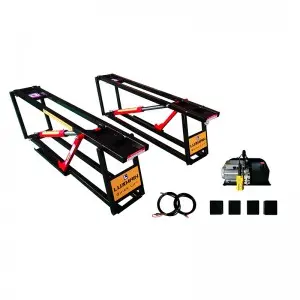****
In recent years, the need for efficient space management in both residential and commercial properties has led to innovative solutions, one of which is the inground lift. Designed to save space and enhance functionality, inground lifts are becoming increasingly popular among property owners looking to improve accessibility and convenience. In this article, we will explore the various benefits of inground lifts, how they work, and the considerations that come with their installation.
What is an Inground Lift?
An inground lift is a type of vertical transport system that is installed below the ground level of a property, usually in a garage, basement, or dedicated lift shaft. This design allows for seamless integration into existing structures without occupying valuable floor space above ground. Inground lifts are particularly beneficial for transporting vehicles, equipment, or even people between different levels of a building.
Benefits of Inground Lifts
1. Space Efficiency
One of the most significant advantages of inground lifts is their ability to maximize usable space. Traditional lifts or ramps can consume considerable floor area, making them impractical for locations with limited room. In contrast, inground lifts remain hidden when not in use, allowing for more efficient layout and design options in garages and commercial spaces. This efficiency means more room for storage, activities, or additional parking.
2. Improved Accessibility
For those with mobility challenges, inground lifts provide a practical solution for navigating between floors in a home or business. Unlike stairs, which can be difficult or impossible for some individuals to use, an inground lift offers a smooth and reliable mode of transport. This enhanced accessibility is not only important for residential properties but also for commercial establishments looking to comply with regulations such as the Americans with Disabilities Act (ADA).

Maximizing Space and Convenience: The Benefits of Inground Lifts for Residential and Commercial Properties
3. Aesthetic Appeal
Inground lifts can significantly enhance the overall aesthetics of a property. Since they sit underground, they do not disrupt the architectural design or visual appeal of the space. Homeowners can maintain a clean and organized garage or basement without the intrusive appearance of a standard lift. Additionally, these lifts can be custom-designed to match the decor of a setting, making them a visually appealing addition.
4. Increased Property Value
Investing in an inground lift can potentially increase the value of a property. As more buyers seek homes with modern conveniences and accessibility features, having a hidden lift can set a property apart from others on the market. For commercial properties, accessibility and space optimization are highly valued, making inground lifts a smart investment for attracting tenants or customers.
5. Enhanced Safety
Safety is a pivotal concern in any property design, and inground lifts have several built-in safety features that enhance their usability. Many inground lifts come equipped with emergency stop buttons, safety gates, and backup systems in case of a power failure. These features not only protect users but also reduce liability concerns for property owners.
Considerations Before Installation
While the advantages of inground lifts are significant, there are several factors to weigh before deciding on installation.

Maximizing Space and Convenience: The Benefits of Inground Lifts for Residential and Commercial Properties
1. Cost
The initial investment required for an inground lift can be substantial due to custom modifications and installation logistics. Homeowners should assess their budget and consider the long-term benefits, including increased property value and potential return on investment, before proceeding.
2. Structural Integrity
Installing an inground lift requires careful planning and design, particularly concerning the structural integrity of the building. It is crucial to consult with engineers or professionals to ensure that the lift can be safely integrated into the existing foundation without compromising the building’s stability.
3. Maintenance
Like any mechanical system, inground lifts require regular maintenance to ensure their safe and efficient operation. Property owners should be prepared for ongoing upkeep, including periodic inspections and repairs as needed.

Maximizing Space and Convenience: The Benefits of Inground Lifts for Residential and Commercial Properties
Conclusion
Inground lifts offer numerous advantages, from maximizing space and improving accessibility to enhancing safety and aesthetic appeal. Their growing popularity in both residential and commercial properties reflects a shift towards smarter property solutions. However, potential installations should carefully consider costs, structural implications, and maintenance commitments before proceeding. With the right planning and investment, an inground lift can be a valuable addition that elevates the functionality and desirability of any property.quick car jack lift
